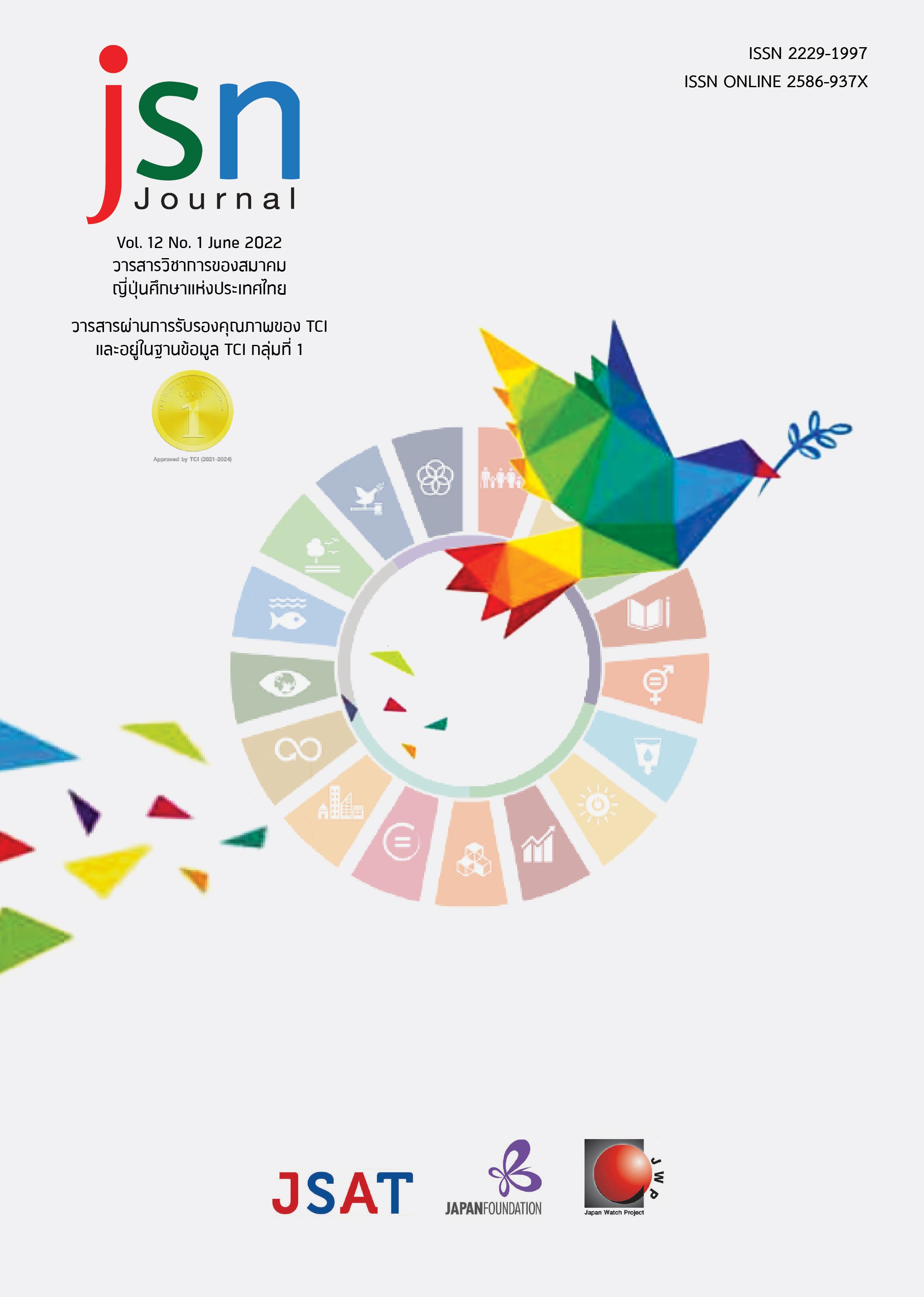Difficulties in Learning Katakana and Learning Strategies of Thai Japanese Learners A Case Study of Thai Undergraduate Students Majoring in Japanese
Main Article Content
Abstract
This study aimed to analyze ability to use katakana vocabulary and the factors affecting the difficulties in learning katakana and to survey the opinions of learners about katakana learning strategies. The participants of this study were 126 Thai undergraduate students majoring in Japanese. The research instruments included the 4-point rating scale, the open-ended questionnaire, and the katakana vocabulary test. The analysis results of the katakana vocabulary test indicated that the students had difficulties in understanding katakana vocabulary composed of Japanese words (Wasei-Eigo) and foreign words (Gairaigo), possibly due to familiarity with the use of English loanwords, which is different from the use of Gairaigo. Moreover, the meaning and use of some words have changed from the original language, making the students unable to apply their English knowledge to katakana learning. Regarding the opinions about katakana learning strategies, it was found that the students’ opinions and use of learning strategies were related to the difficulties in katakana learning mentioned above. The research results also suggested other learning difficulties, including unique spelling and pronunciation of katakana words.
Article Details

This work is licensed under a Creative Commons Attribution-NonCommercial-NoDerivatives 4.0 International License.
ข้อความและข้อคิดเห็นต่างๆ ในบทความเป็นของผู้เขียนบทความนั้นๆ ไม่ใช่ความเห็นของกองบรรณาธิการหรือของวารสาร jsn Journal
References
เพ็ญ เกตุก่อลาภ. (2549). การใช้ไกไรโงะของพนักงานชาวไทยในบริษัทญี่ปุ่น. [วิทยานิพนธ์ศิลปศาสตร์มหาบัณฑิต]. มหาวิทยาลัยธรรมศาสตร์.
สุพรรษา พิณศรี. (2554). การศึกษาความเชื่อเรื่องไกไรโงะเปรียบเทียบนักศึกษา อาจารย์และคนทางานที่ใช้ภาษาญี่ปุ่น. [วิทยานิพนธ์ศิลปศาสตร์มหาบัณฑิต]. มหาวิทยาลัยธรรมศาสตร์.
アッタイエム タナポン(2019).「タイ人日本語学習者の語彙学習ストラテジー」大阪大学修士論文.
アッタイエム タナポン(2020a).「タイ人日本語学習者のカタカナ表記語学習の困難点に繋がる要素についての検討」 日本語日本文化国際フォーラム論文集』8号,68-77.
アッタイエム タナポン(2020b).「タイ人日本語学習者における「和製英語」の理解」 日本語・日本文化研究』30号, 144-155.
キャサリン・クラフト(2019).『日本人が勘違いしているカタカナ英語120』中公新書ラクレ.
国立国語研究所 (2005).「現代雑誌の語彙調査―1994年発行70誌」『秀英出版 .
小森和子・三國純子・近藤安月子(2004).「文章理解を促進する語彙知識の量的側面―既知語率の閾値探索の試み―」 日本語教 125, 83-92.
柴崎秀子・玉岡賀津雄・高取由紀 (2007).「アメリカ人は和製英語をどのぐらい理解できるか-英語母語話者の和製英語の知識と意味推測に関する 調査-」『日本語科学』21号, 89-110.
高村大也・永田亮・川崎義史.「外来語の意味変化に対する数理的分析 言語処理学会第23 回年次大会発表論文集, 907-910,
年3 月.
ダニエル・カール(2015).『そのカタカナ英語、外国人には通じません』フォレスト出版.
張婧禕・玉岡賀津雄・早川杏子 (2014).「和製英語の理解における英語および日本語の語彙知識の影響― 中国華東地域の日本語学習者を例に―」 日本教科教育学会誌』36号, 23-32.
陣内正敬(2008).「日本語学習者のカタカナ語意識とカタカナ語教育」『言語と文化=語言 与文化』 11号, 47-60.
Oxford, R.L. (1990). Language Learning Strategies : what every teacher should know. New York: Newbury House.
แหล่งข้อมูลอิเล็กทรอนิกส์ เว็บไซต์
意味まとめ.「カタカナ語の意味まとめ」意味まとめ,2020年8月1日更新 https://imimatome.com/katakanagonoimi/
日本語読解学習支援システム リーディング チュウ太, 2021年3月16日更新. https://chuta.cegloc.tsukuba.ac.jp/


